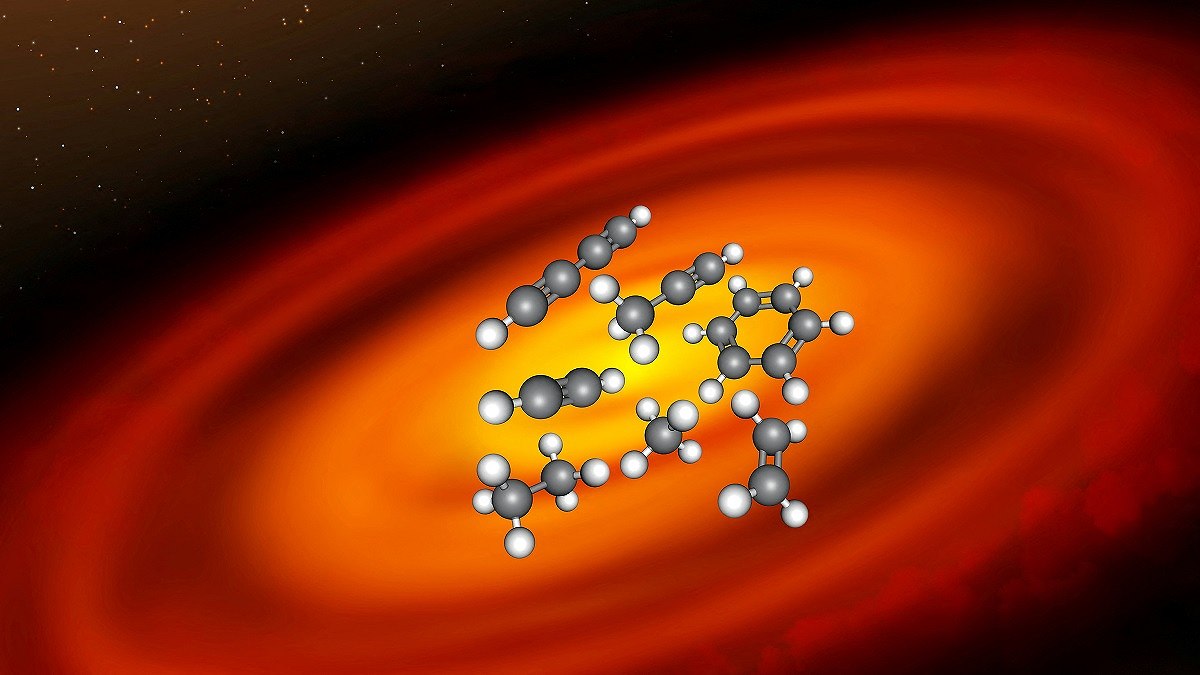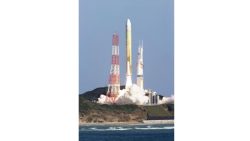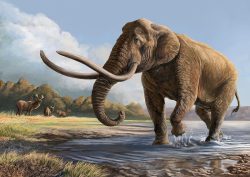
An artist’s impression of a protoplanetary disk around a very low-mass star obtained on June 6
13:23 JST, July 3, 2024
WASHINGTON (Reuters) — Stars about the size of our sun are not the most common ones in the Milky Way. Much smaller stars are way more common — and those host the most rocky planets in the galaxy, the type in focus as scientists search for worlds capable of harboring life.
New research is providing insight into how planets form around these small stars, called very low mass stars (VLMS), showing how the chemistry in the planet-forming disks of gas and dust surrounding them differs substantially from such disks observed around stars like the sun.
The James Webb Space Telescope has gathered data on a planet-forming — protoplanetary — disk around a newborn star called ISO-ChaI 147. Its mass is about 11% that of the sun, its diameter about 43% of it and its luminosity about 2%.
ISO-ChaI 147 is located about 625 light years from Earth.
Webb’s observations showed that the gas in this star’s protoplanetary disk — ingredients for future planets — is carbon-rich with no evidence of water vapor, as opposed to the oxygen-rich gas and abundant water vapor in such disks around newborn sun-like stars.
Might this difference influence the future habitability of rocky planets that form around these small stars?
“A planet mainly requires, among other things, water to be in liquid state and have a suitable atmosphere for it to be habitable,” said astrophysicist Aditya Arabhavi of the University of Groningen in the Netherlands, lead author of the study published on June 6 in the journal Science.
“Although we can expect that the different environment of VLMS disks would have a strong influence on the planetary composition and thus the habitability, it is difficult to predict whether this makes it less likely to be habitable,” Arabhavi said.
Stars form when dense clumps of interstellar gas and dust collapse under their own gravitational pull. Once a star emerges at the center of such a cloud, leftover material forms a swirling disk around it that feeds stellar growth and often gives rise to planets.
The disks around nascent sun-sized stars contain much more material than those around smaller stars, making these larger stars more likely to have gas giant planets form around them, like the sun has Jupiter and Saturn.
“They are the most common stars in our Milky Way,” astrophysicist and study coauthor Thomas Henning of the Max Planck Institute for Astronomy in Germany said of very low mass stars.
“These objects are presently the targets in the search for rocky planets because they are easier to find around such stars. In addition, the masses of their planet-forming disks are in general too small to form giant planets, but large enough to form rocky planets,” Henning said.
Scientists already have identified rocky planets orbiting very low mass stars, including some in the “habitable zone” — an orbital distance from a star where a planet may experience conditions amenable to life.
“I would expect that the planets would remain habitable if they are located in the zone where liquid water can exist,” Henning said.
Still in its infancy, ISO-ChaI 147 eventually may become a type of very low mass star called a red dwarf. The star’s diameter is only about four times greater than Jupiter’s. Our sun’s diameter is about 10 times larger than Jupiter’s.
Webb, which began operating in 2022, also spotted ethane in ISO-ChaI 147’s protoplanetary disk — the first time it has been detected outside our solar system — and other carbon-rich gases never previously seen in such a disk.
“Webb is certainly helping us by providing invaluable data that was never possible before,” Arabhavi said. “Although previous studies with the [now-retired] Spitzer Space Telescope indicated that these planet-forming disks around VLMS differ from the disks around sun-like stars, it was not known that these sources not just differ slightly but are unlike any observed sun-like star to date in terms of gas composition.”
"Science & Nature" POPULAR ARTICLE
-

‘Fiercest, Most Damaging Invasive Weed’ Spreading in Rivers, Lakes in Japan, Alligator Weed Found in Numerous Locations
-

Univ. in Japan, Tokyo-Based Startup to Develop Satellite for Disaster Prevention Measures, Bears
-

Tsunami Can Travel Vast Distances Before Striking, Warn Japanese Researchers
-

Japan’s H3 Rocket Failed in Latest Launch, Says Official
-

Japan’s H3 Rocket Likely Made 1.5 Trips Around Earth; Analyst Believes Satellite Almost Certainly Lost As Well
JN ACCESS RANKING
-

Japan Govt Adopts Measures to Curb Mega Solar Power Plant Projects Amid Environmental Concerns
-

Core Inflation in Tokyo Slows in December but Stays above BOJ Target
-

Major Japan Firms’ Average Winter Bonus Tops ¥1 Mil.
-

Tokyo Zoo Wolf Believed to Have Used Vegetation Growing on Wall to Climb, Escape; Animal Living Happily after Recapture
-

JAL, ANA Cancel Flights During 3-day Holiday Weekend due to Blizzard

























